Have Questions or Comments? Please ask your questions in the comments section below. We attempt to respond to ALL questions or comments.
Listen via YouTube video if desired
Transcription:
Intro / End: This is the Get Sellers Calling You Marketing Podcast for real estate agents and I’m Beatty Carmichael. For simple to do proven marketing strategies focused exclusively on finding sellers and getting more listings, visit our website at getsellerscallingyou.com
And now let’s begin our next session of Get Sellers Calling You.
Caroline: I think that’s our signal that we are recording and that should mean that we have Beatty on the call. Are you there Beatty?
Beatty: I am here.
Caroline: Okay. Great.
Beatty: I am.
Caroline: Okay. Well, I’ll just officially welcome us. I am Caroline Springer and welcome to this next session of Get Sellers Calling You with Beatty Carmichael.
Beatty is the CEO of Master Grabber, the creator of Agent Dominator and one of the top marketing experts in the real estate field. Today we’re actually going to be doing a continuation from our call from last week.
It’s exploring Five Ways to Identify Sellers. Last week, we went through home valuation and really went through a lot of great information. There’s so much content here to explore together.
So if you would like recording of that podcast, let us know, and it should be on our Get Sellers Calling You website as well, for you to refer back to.
Just a reminder for those of you that are on our live call, we will have the lines muted, but again, opened up for questions at the end of the call with Beatty.
So welcome, Beatty, officially.
Beatty: Well thank you. I’m glad to be back.
Caroline: Well thank you, for just your time and for continuing with us. I thought we could continue, like I said, we are continuing in The Five Ways To Identify Sellers. I thought we could maybe just start off with you know, going back to refresher of what we went over last time possibly, just a few minutes, and then start with point number two.
Beatty: Okay. Sure. I think that’s a great idea. So just a quick refresher, both for those who may have missed last week’s call or if you’re actually listening to this sometime in the future as a podcast, and it’s been a while since you listened to last week’s call, this will just kind of catch us up.
So there are a number of ways that you can find sellers before they go on the market. The obvious value of finding a seller before they go on the market is if you can get to them first, you pretty much solidify your foothold in getting that listing when it does come on. Assuming and especially if they like you. Okay?
So the follow through is critically important, but the first thing that we talked about from last week, is the home valuation websites and how to market them and how to really kind of utilize them and most importantly there’s a couple things that you can do that will enhance the ability of only generating leads from people who are thinking about selling.
So in probably a 60 or 90 second nutshell, you can find home valuation websites online. There’s one version, I forget, that’s really a great one, because it doesn’t give a specific price point for a person making them then fight you when it comes to trying to get a listing price, but it shows a range of prices from actually three different sources that gives the homeowner a chance to see, “Okay, my home’s is going to be priced between 375 and 522. Another provider says “It’s going to probably around 595 to 540.”
Okay, so it’s going to give some different price ranges that allows your prospect to not have a preconceived idea, that then fights you on it. So that the first things is to a good one, so that you’re not fighting issues. The second thing that we talked about is when you do your marketing if you add a little bit of content up front on your headline and in your body copy that says basically, “If you are thinking about selling your home than one of the first things you ought to do is find out what your home is worth so you get an idea of what you would have money for, for your next house.”
That concept of an idea. What this does is, it begins to eliminate more of those people who just want to find out what their home is worth. If you just go out with an ad that says. “Find out what your home is worth, go to this website”, then you have no idea of if the person is thinking about selling or not, because almost everyone would like to know what their home is worth, because it is their most valuable asset. So you’ve gotta do a few things to kind of narrow that field down.
Those are the core of the things we talked about, obviously went into a lot more, deeper analysis on it, but that’s kind of a quick review. Does that help Caroline?
Caroline: Yes, that does. Thank you, Beatty. I think that was a good refresher and again, we do have a full 30 minute podcast kind of exploring those things. It was really a lot of great content. So thank you for sharing all of your expertise, Beatty. So, kind of moving forward-
Beatty: I’ve got to tell you a story on that, okay? Sorry to interrupt, but when you say all your expertise. So this is true about almost everything, so I share this because it’s funny, but also there’s an inherent amount of truth in it.
This old businessman had a business. He’d been running it for years. One of his key employees who’d been with him for ten or so years, came to him one day and said, “Boss, I’ve got some good news and bad news.” He said, “Alright, well let’s hear the good news first.” So the good news, “I’m going to be leaving and I’m starting my own business and finally move into business ownership.” “So, great. Congratulations. What’s the bad news?” “The bad news is, I’m going to be competing directly with you in the same line of work that you do.” The old businessman leaned back in his chair and said, “Well, that’s alright, but just remember one thing.” He said, “What’s that boss?” He said, “I taught you everything you know, but I didn’t teach you everything I know.”
So I will try to teach as much as I know, but there is inherently a lot of those intricacies within the details that never really come out in calls like this. So I’m not sure where that goes but … Oh, I do have to tell you one thing, so this is something, by the way, how can you take that story and use it in real estate?
So if you’re going after FSBOs, okay? One of the things that we did early on and there’s just not enough FSBOs to really mature this concept out at the scale that we need to mature it if we’re going to actually pursue it, but for those agents that do go after FSBOs, here’s a really good approach that you can take.
Be willing to help them with information that will help them sell their home, but overwhelm them with how much information they need to do well if they’re going to get the most money, because most people, when they’re doing a FSBO, they believe that, All I have to do is stick a sign in the yard, pay someone to put me online in the MLS or not even go with the MLS and just go Zillow and these other websites, because people are still going to find. Be willing to pay a little bit of a fee to a buyer’s agent and I’m going to do better than selling my home with a listing agent.
So that’s their perception, but the reality is most of us know is completely different, but the FSBO owner doesn’t know it. So what we have to do is educate them to the point that they realize that they’re woefully unprepared to really understand all the dynamics. So talk to them about the contracts. Talk to them about negotiation. Talk to them about better preparation of the house and things to update and things to fix up and things to stage and all these other aspects. Okay?
If you were to build out a list, there’s probably 20 or 30 different things that you as a realtor do on the seller’s side to ensure most successful sales. All the way down in and including the marketing and the pre-marketing and everything else. So as you’re sharing that, one of the things that we would teach our clients to use is that comment that I told in the story of the old businessman, because that FSBO person says, “Okay I think I got it, but boy there’s a lot here.”
“Yeah, but just remember, I’ve taught you everything you know, but I haven’t taught you everything I know. The key for the value ad from of realtor coming in to list your home brings to the table is all these other things that you don’t know, because what you’re trying to do is you’re trying to save 3%. The question is, do you believe my skill and expertise.”
And you start listing out all these areas that you work in, from preparation and promotion, from professional photography and getting it written online, driving in the business, networking with the agents, knowing how to negotiate, You know, all these things.
“Do you feel that I could probably achieve a 3% greater difference than your ability who’ve never done this except once. Okay? I’ve done this 500 times in my career.”
So at that point you start to recognize, Yes I think I got it, but the reality is all I know is what you taught me, but you know a whole lot more that you never taught me. I don’t know if that makes sense, but that’s how that topic came up when we were using it a while back.
Anyway, I digressed from the topic of this call, so let’s get back on topic.
Caroline: No, I think that’s great. I mean, those are great pointers. That’s what we’re here for is to learn and share stories and so I think it’s great. I like, even that story, a little bit of entertainment is good too. So that story about the businessman too and then again, of course applying it to our businesses too.
So think those were all really great points and things that … I know we’ve spoken before, my husband and I are not selling our home, but I’ve thought about that, the more that I’ve thought about one day selling our home. I think occasionally you think, “Oh I could sell my home, I know the best features and things like that”, but then again, really conveying that argument about that they can really bring in more than that 3% that you would save. The more I think about it, the more I think when I really do it, we will probably find a realtor. So I think that’s a great piece of advice to share.
Beatty: Good.
Caroline: So yes, continuing with our Five Ways To Identify Sellers. I know for point two, we had you kind of go through them last week and so for point two, you have a concept called I Have a Client and this one I’m real excited about. I have seen it in action a little bit and I’ve seen how successful it is, so I’m really, really excited to hear you share about it wherever you’d like to begin.
Beatty: Sure. Well let’s talk about what the ‘I Have a Client’ is. So If mentioned the ‘I Have a Client’ letter, most agents’ kind of get an idea. The challenge that I find with most agents okay? And this happens with everyone, I’m in the same boat, within my own little realm, is we put everything in a box and we say “Well that won’t work for me because.”
What happens is you start to limit yourself by limiting your thinking of the possibility of how can you use it in a way that does work. So let me share what happened. A long time friend of the family, a real estate agent named Rob, became one of my clients early on and at this time we were still kind of developing content to identify sellers before they came on the market.
He was sharing with me something that he did and I immediately latched on it. I tried it and it actually became our number one producing content for identifying a seller before they come on the market and it’s what I call the ‘I Have a Client’ approach.
But let me share what happened with him. So most agents recognize the ‘I Have a Client’ approach that says, “Hey, I’ve got a buyer. He wants to live someplace.” And so I target those homeowners and say, “I’ve got a buyer that wants to buy your home. Will you sell?” And if they don’t get a response, the agent just kind of goes away.
But what this guy did is, this buyer had been looking in this one area of town, probably one neighborhood and just couldn’t find a house. It had been a year and a half, maybe two years, as best as I recall the story. So Rob wrote a letter and he photocopied it and he stuck it in the mailboxes on all the houses on this one particular street, where his client really wanted to live.
And the letter said something like, “Hey, I’m Rob so and so. I’m a real estate agent, I have a client who’s been looking for a house on this street for a year and a half or two years. He can’t find the one that he wants. Are you interested in selling your home, because if you are, I think my client will buy it.” Okay? And he always went through and I think, maybe kind of selectively put it in the various houses that fit the criteria of his buyer.
He told me that he got a response or two and if I recall it correctly, because again, this goes back years, so I don’t want to elaborate and fabricate, but I think what happened is he found a seller, but it wasn’t a right fit for the buyer, but he got a listing out of it anyway.
I thought, that’s brilliant. Okay? Because now what we have is, the most important thing when identifying a seller is a compelling offer. If I can get a compelling offer that will jar that person thinking about selling to shift, to take action, to respond, then I’ve got a way I can find sellers all day long.
So we then took that approach and started thinking and saying “How can we modify this so that it fits anyone?” That’s what I’d like to suggest here. You can take the ‘I Have a Client’ approach and modify it, so it fits pretty much anyone on this call.
It’s a very simple way of doing it. Now you can over use it and if you over use it then the effectiveness will go away, but what limits most people, is the belief that because I don’t have a client right now looking to buy on this street or in this neighborhood, I can’t use this approach because I want to be honest. I want to have integrity and if I don’t have a client that’s looking, I can’t use that approach.
Well, change the terminology a little bit okay? So you may not have a client, but do you have buyers who all the time are looking in that area? Do you have a buyer database? People that have expressed interest in buying, maybe leads you generated through Zillow or other online sources that were looking at a home.
And if you’re like most good agents, hopefully you’ve been building up a database. You have some sort of a touch system and you’ll find that, periodically over time, those people end up buying a home, because sometimes it takes a while. Sometimes it a year or a year and a half before they find the home that they really want.
So you can then leverage that approach and write a letter that says, “I have approximately”, and lets just now put some numbers to it. So let’s say I’m going to go out into this neighborhood with a zip code, okay? A general zip code. Maybe people who’ve inquired on houses that were in this certain area and you’ve accumulated that database.
So why not then put together a letter that says, “I work with a lot of buyers and I have 52 buyers right now, looking for a home in your specific area and they have not been able to find the right one. If you’re thinking about selling your home, I might be able to get it sold immediately, because of these buyers that I work with. If you’re interested in selling, if you think you may want to sell, give me a call and let’s talk and see if it fits what these buyers are looking for.”
Okay, so that’s one way that you can do it. So now we’re able to take that compelling offer, we’re able to re-write the approach, so that now we’re completely honest and we’re not saying necessarily, ‘I’ve got a buyer that wants to buy your house, but I’ve got a buyer that wants to be in this area.”
All we’re doing is shaking the bushes to try to get someone to raise their hand, so to speak, and reach out and say, “Yeah, we’re possibly thinking about buying. Tell me what these guys are looking for?”
Okay? So that’s the initial concept. Are you following so far?
Caroline: Yes, I think that’s brilliant. I mean, I don’t think that would be at all making yourself portraying something might not be true. I think that kind of covers your bases and then like you said, “Will kind of create that self selection naturally, to get the right interested people to grab the bait.”
Beatty: Yes, but now there is one inherent problem with this. Can you figure it out before I tell you?
Caroline: Oh, as you were saying that I was like, “Oh, I don’t know. I’m afraid I’m going to say the wrong thing.” Is it going to bring too wide of a net in?
Beatty: Nope.
Caroline: Okay. I didn’t think so but-
Beatty: It’s just the opposite. It’s just the opposite.
Caroline: Okay. Oh, just the opposite. It’s going to bring too few people that aren’t quite ready, they’re just thinking about it.
Beatty: That’s right. Too few people. So why do you think it’s going to bring too few people? Or let me restate it. It’s going to bring much fewer people than really thinking about selling. Why do you think that is?
Caroline: Probably, just because it’s just a definitive action statement. Like, I have people that are ready to buy right now. You know, it’s probably going to only bring people that have either, maybe already tried to sell their home or have already listed with somebody, which is probably a smaller scope of people.
I would think just because of … I just know if I was thinking about selling and wasn’t maybe ready to sell today, I just think that would be kind of like something I’d tuck away, but maybe wouldn’t necessarily call the person right away.
Beatty: Potentially. That’s a good idea, but it actually is something deeper than that. It has to do with how prospects respond and how they don’t respond. Let me know when you’re ready to give up and I’ll give you the answer.
Caroline: I’m ready to give up. I’m ready to hear.
Beatty: Okay. So let’s look at a high level of lead generation. Okay, let me ask it this way. Let me see if we can get there through a series of questions. If I were to put that letter out among a number of homes throughout a neighborhood, in your estimation, would you agree that it’s likely, I’m going to actually stick that letter in the mailbox of at least a decent number of people who actually are thinking about selling their home in the near future? Does that make sense? If I get it out to enough people?
Caroline: Are you saying that I would be thinking … Yes, that makes sense.
Beatty: Okay. Yeah, just the sheer numbers. If I go in and stick that letter in a hundred mailboxes. I am bound to stick it in the mailboxes of at least several people that truly are thinking about selling. If I were to stick it out into 500 mailboxes, I’m going to have even more people that actually get it in the mailbox of those who are thinking about selling.
So I’ve got a group of people who are thinking about selling, but here’s the problem. If you’re thinking about selling, but you’re not really sure if you’re going to sell or you’re thinking about selling, but you know it’s going to be next year. How likely, how comfortable are you, to call up a real estate agent and let them know that information before you’re really committed to move forward?
Caroline: Right. Yeah, that’s what I was thinking earlier. I think that would be, it probably wouldn’t be very comfortable, just because you would think, “Oh, I’m calling a sales person, they’ve got people ready. I’m just thinking and we’re just kind of planning out.”
Because selling, like you said, “Your most valuable asset is a really big decision and something people take some time to think about.” So they wouldn’t necessarily call right away. Not at the beginning of their thought process.
Beatty: That’s right. So if you’re somewhere in that thinking process, but not yet at the commitment ready to sell process, you’re going to hesitate calling a sales person and letting them know. Correct?
Caroline: Correct. Absolutely.
Beatty: All right. Now let’s look on the far other end of that spectrum. Let’s assume that you’ve been thinking about selling and that you’re actually about to put your home … you wanna put your home on the market in about two weeks. Now, if that’s the case, are you going to be more likely to pick up the phone and call that agent?
Caroline: Absolutely. Just especially thinking that they already had people ready to go.
Beatty: Okay. So here’s what we’ve got. Okay? So right now, we’ve got a compelling offer that is inducive to only getting the ‘I’m ready to sell right now type of prospect’, but not inducive on getting the ‘I’m thinking about selling but I’m not ready to committee prospect.’ Follow the logic so far?
Caroline: Yes. I’m with you.
Beatty: Okay. All right. Which group do you think has more sellers in it? The one that’s ready to sell right now or that group of people who are thinking about selling, but not ready to commit. Which one do you think has more people in it?
Caroline: Probably the one that’s thinking about selling. Yeah, because the other one is probably listed with somebody.
Beatty: Yep. So the one that’s thinking about selling. That’s right, so the one that’s thinking about selling is more likely to have a lot more people in. That if you were to nurture that group, you will end up making more sales. Here’s where the problem comes.
If you’re about to put your home on the market, maybe within two weeks, is it likely and/or probable that you’ve already been thinking about a specific agent, maybe even called this specific agent, maybe even interviewed a specific agent and might even have already signed a listing agreement with that specific agent? Is it likely and probable that if you’re a week or two out, that that transaction has already taken place?
Caroline: Yes. Absolutely. I would think so, for most people. Like I said, I think, unless you were with an agent that didn’t work or had tried to list several times. I see what you’re saying, you’re kind of weeding the people out, that won’t respond.
Beatty: So here’s where we find ourselves. If you take that approach as we just did it, call me, you’re likely to get only those people that are right around the corner from putting their home on the market and a good number of them are likely already thinking about, if not already contracted with another agent.
So you have less opportunity to pick up a deal, the closer to the time that they’re about to put their home on the market. So the inherent problem with this approach is, you eliminate too many people for one reason. You’re getting them, requiring them to actually contact you directly.
One of the things that I’ve learned in Direct Response Marketing, which is what this is. One of the things that I’ve learned is, is you want to open up the floodgate of people responding, you’ve got to make it fearless for them to respond. You’ve got to make it where, they don’t feel like they have to give up any of their contact information to some unknown person, who might then try to follow up and try to push them into making a selling decision before they’re ready. Okay. Make sense so far?
Caroline: Yes. Absolutely.
Beatty: So then the question is how do you take … Go ahead.
Caroline: Oh, I was just going to say, I know where you’re going and I’m excited, because how do you, without them calling you, get their information?
Beatty: So now we have to apply what we call stealth identification. We have to create some method that allows us, without them knowing that we know, but allows us to identify who they are, which means we have to use a different type of call to action.
So in a real high nutshell, in a marketing piece you have the offer, which in this case, I have buyers who may buy your home immediately. You have the body copy, which explains and validates the offer, so it becomes credible and then you have the call to action, which is how they find out more information.
So the call to action is really the key in this approach to maximizing the number of prospects that you get. If you use the call to action that says email me or text me or call me or call my office or anything like that, where they are identifying who they are, you’re going to eliminate all of those people that are afraid to give their name to a sales person, because they’re not ready yet. You’re going to eliminate all those people who, they’re just thinking about this, but they don’t want to bother you and they don’t want someone calling them right now, you know, that type of stuff.
So the question then is, to make this work really well, you’ve got to come up with a different call to action. So there’s a couple ways that you can identify people through a direct response method. The easiest one that’s out there, is the call capture number. So this is a toll free number. It’s a recorded message and there are tons of providers all through the real estate world. You can just type in call capture real estate.
Okay, something like that and you’ll find tons of vendors on it, but what will happen is, you would then put a message on that voicemail recording that says, “Hi, if you’re responding to my marketing piece and thinking that you might be interested in selling in such and such area.”
So maybe you use a different call capture number for each locality. You know, in the Garden Heights area. “I’ve got 52 buyers in my database right now that are looking in that area and I would love to visit with you, especially if you’re thinking about putting it on the market soon or later.”
So you just give whatever message, because the message doesn’t matter at this point. At this point I would even say, “Call me or email me or send me an email with your home address or with your email address and I’ll respond back with what specific these homeowners are generally looking for to see if your home is a match.”
Anything you want to do at that point, because what you’ve done now is by referring to the fact that they call that toll free number to hear the message, they’ve just identified themselves, because now you have their caller ID. You don’t know who they are, you just have a caller ID of the person and now you know that that person is likely thinking about selling.
So that’s the simple thing. Is it okay if we go just maybe a couple of minutes, because I know we’re about out of time for this call, but I wanted to talk on one more thing. I probably should not have taken time about the FSBO stuff at the beginning.
Caroline: That’s okay. No. I think I know where you’re going. I think it would be great to just explore a few more minutes, absolutely.
Beatty: Okay. Great. So another thing that you can do, so you have the call capture number okay? You do have a website concept idea, where you can send someone to a website and if you send someone to a website, usually you say, “Fill out this form for more information.” That kind of work, but it kind of doesn’t, because now you’re back in that same problem.
One of the things that we did and I don’t know, I think there may be other sources online that will help you do this. I know that one of the things that we created to make this happen, is we actually created a unique URL for each marketing piece we send out.
So if we were to send it out to 100 addresses, each address has a different URL and then we track the URL that is being hit at the moment. Based on which URL is being hit, we match it back to the address we’ve sent it to. So now we know exactly who it is, but the key in this whole approach is, you’ve got the amazing offer, but then you’ve got to have some way to get them to respond without them knowing it.
Heres the magnitude of it. Especially for those people who are listening in today and they do online marketing, they have a website, they have a lead capture page, you’ll know these numbers.
It’s typically out of every 100 viewers that come to your website, maybe five or eight of them will actually fill out the form. In other words, you’ll get somewhere 15 and 20 times the response rate if they don’t have to fill out the form and that’s what we find. If you can use some sort of a process that captures their information without them knowing it, you open up the floodgates. The floodgates that you’re opening are those who are not yet ready, but they’re thinking about it.
So if you can engage with those who are not yet ready, but are thinking about it and you have a great follow up program and you stay in touch with them, then our experience, when you don’t follow through properly, you can get 90% to 100% of all those listings when they come on the market to be your market. In fact, that might be something we want to talk about later on with this call series, is how do you follow up on these things.
But anyway, I know we’re pretty much kind of out of time. Let me turn it back over to you just out of [inaudible 00:32:39] of that.
Caroline: No. Yeah, that’s great. No, I mean, I was just thinking that too that, that could be something to explore, like how do you respond? Because I think some people might not want to feel too big-brothery and I think that there is an appropriate way to approach that and I know that’d be something that we would love to maybe hear from you about.
Well thank you Beatty. I know we are out of time, so you know, it is about time to wrap up, but thank you for your time and just your expertise. I think it really was a great call, but before we close out, I know Beatty, that you offer some services like even what you were just referring to with the ‘I Have a Client’ card and even, I don’t know if you want to explore and share a little bit about like those unique URLs and geographic farming or just any kind of services. I wanted to kind of give you an open window to share on that.
Beatty: Yeah. I appreciate that. We do. It’s called Agent Dominator. You can find it at agentdominator.net. So these things that I’m teaching, it’s all the stuff that we use, that we’ve perfected. We do a really great job.
Sort of like what I said at the beginning of the call. You know, I taught you everything you know, but I haven’t taught you everything that I know. Okay? It’s the difference between what I taught you and what I know that really makes the biggest difference and it’s a lot of times those little nuances.
So we’ve got a program that we’ve done it’s used for your personal market, it’s used for the cold market like geo-farming or anything like that. It’s a touch system and it has everything from finding sellers to the entire follow through process.
All right, Imagine this, imagine if you could take even your personal list, where most people know who are going on the market sometimes without them. They choose another agent. If you knew who was thinking about selling before they came on the market and it’s your personal list, yeah, you could get those deals all day long and keep them from going to someone else. So that’s kind of what Agent Dominator does along with a lot of other things. So I appreciate you letting me do that.
Caroline: Absolutely. Well yeah, thank you again so much Beatty, for your time and for sharing that. So what we’re going to do is wrap up the call and for those of you that are on the live call, if you have any questions that you’d like to ask Beatty, just hold on and as soon as we’ve got [inaudible 00:35:14] we’ll go over to a short questions and answer time.
We are finishing up our getsellerscallingyou.com website. We’re always recording full B and that also you’ll be able to find our schedule of when all of our calls will be as well. There’s going to be some training and resources on there and then if you would like a copy of this call or would like to forward it in just a minute when we open up the lines you can let us know there as well.
So that’s going to be all for today. Thank you so much for joining in and again, thank you for your time, Beatty.
Beatty: If you’ve enjoyed this podcast, please tell others about it. Also, be sure to get our step by step training on how to double sales and referrals from past clients and sphere of influence. It’s absolutely the easiest way to grow your business fast and is completely free. You’ll find it on our website at getsellerscallingyou.com. Thanks for listening.
P006

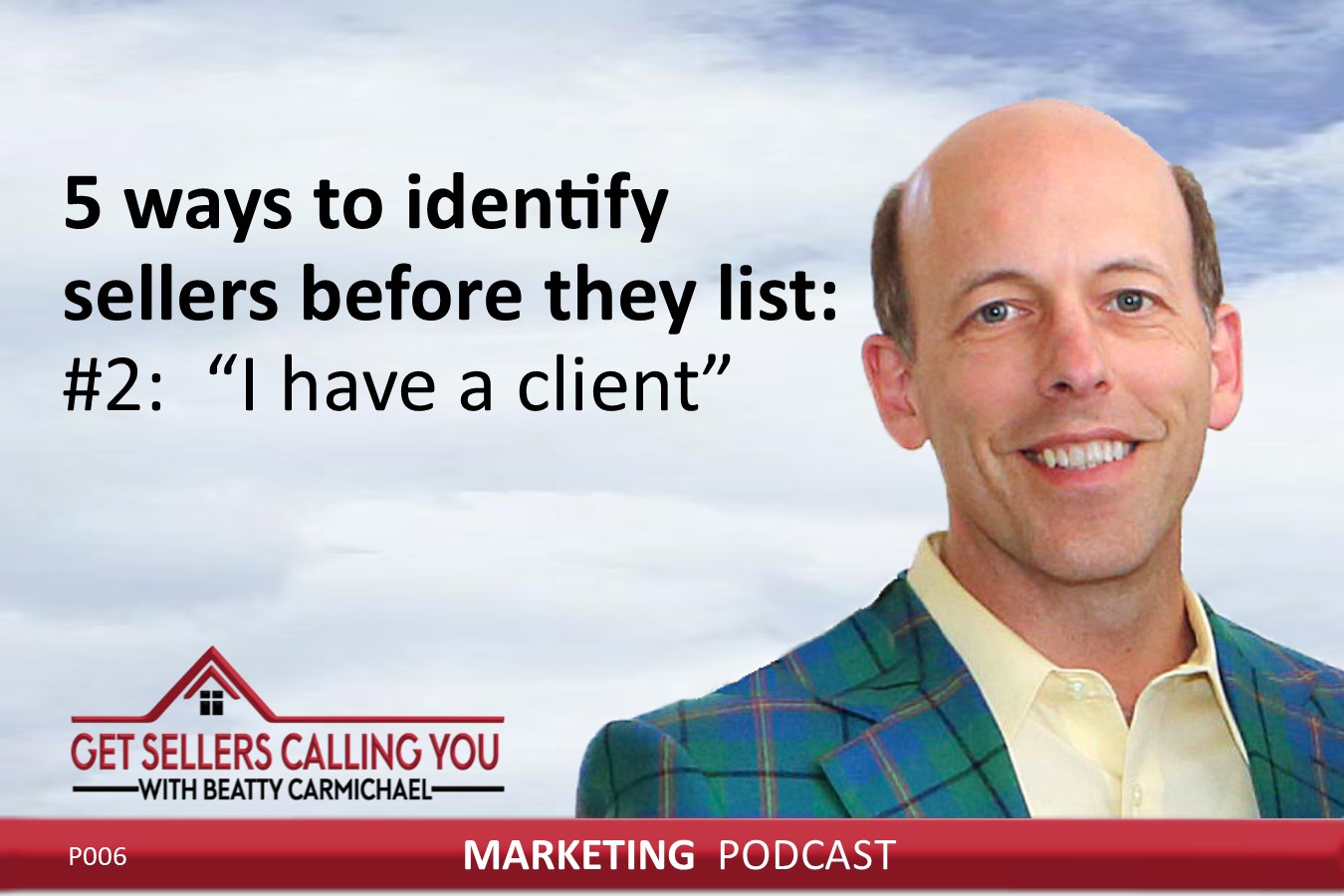
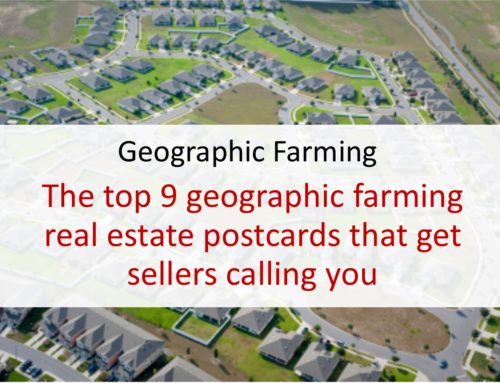
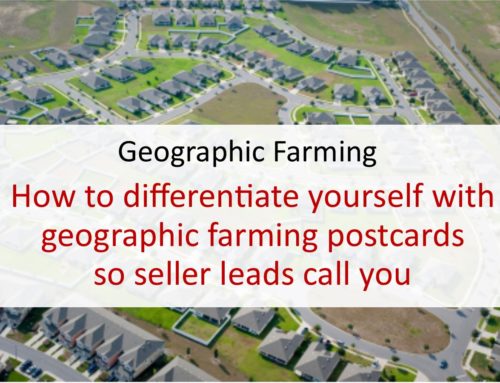
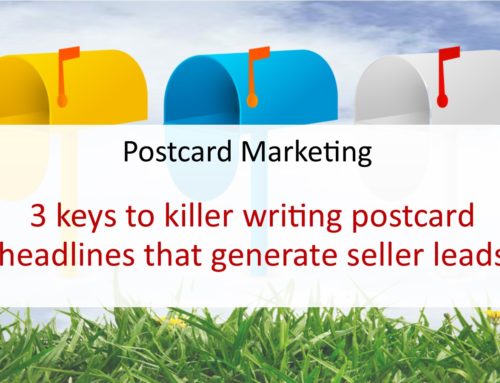
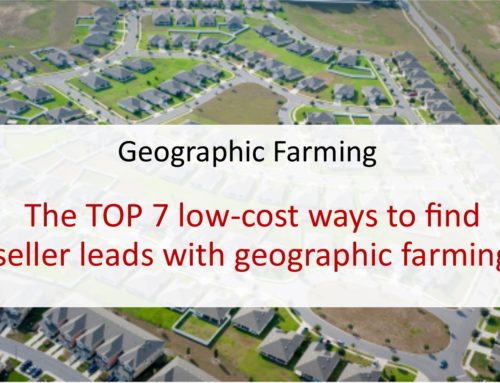
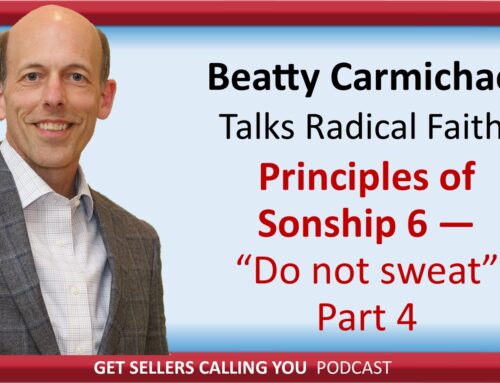

Leave A Comment